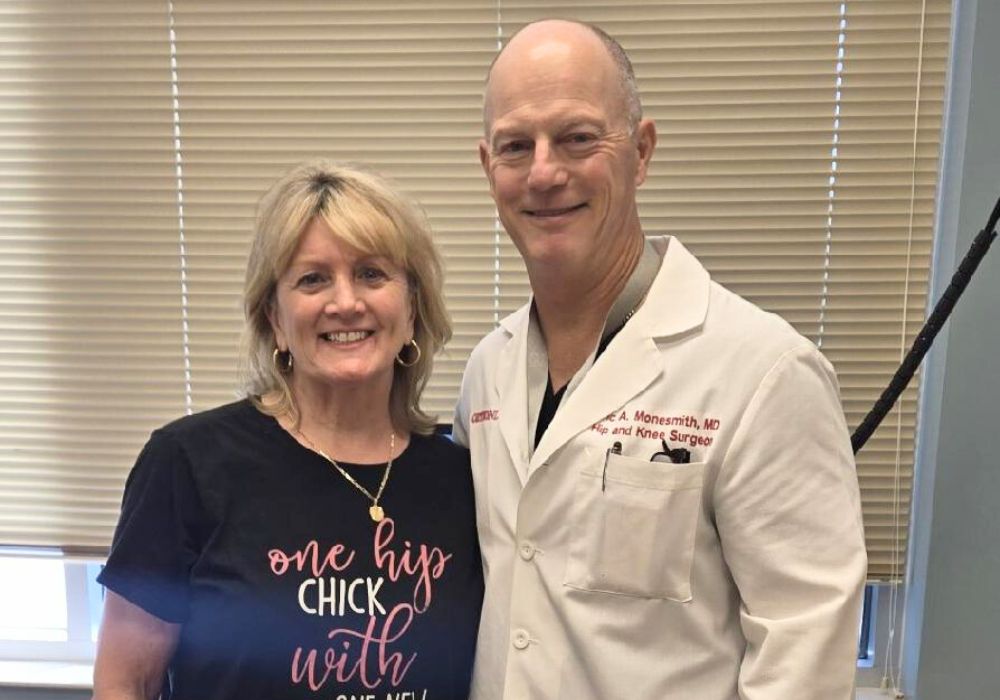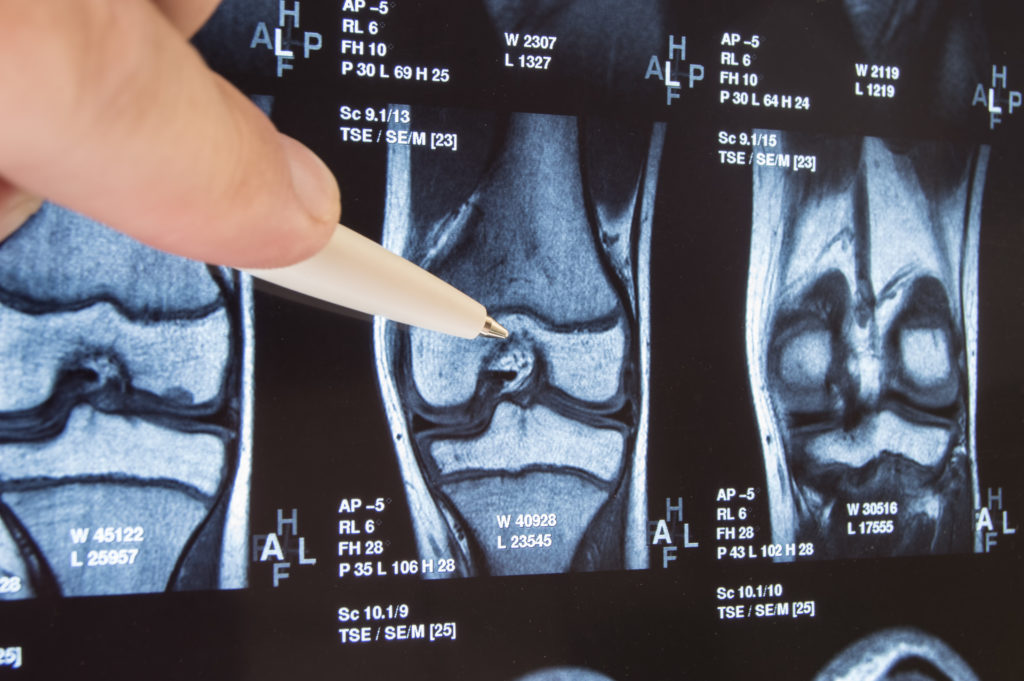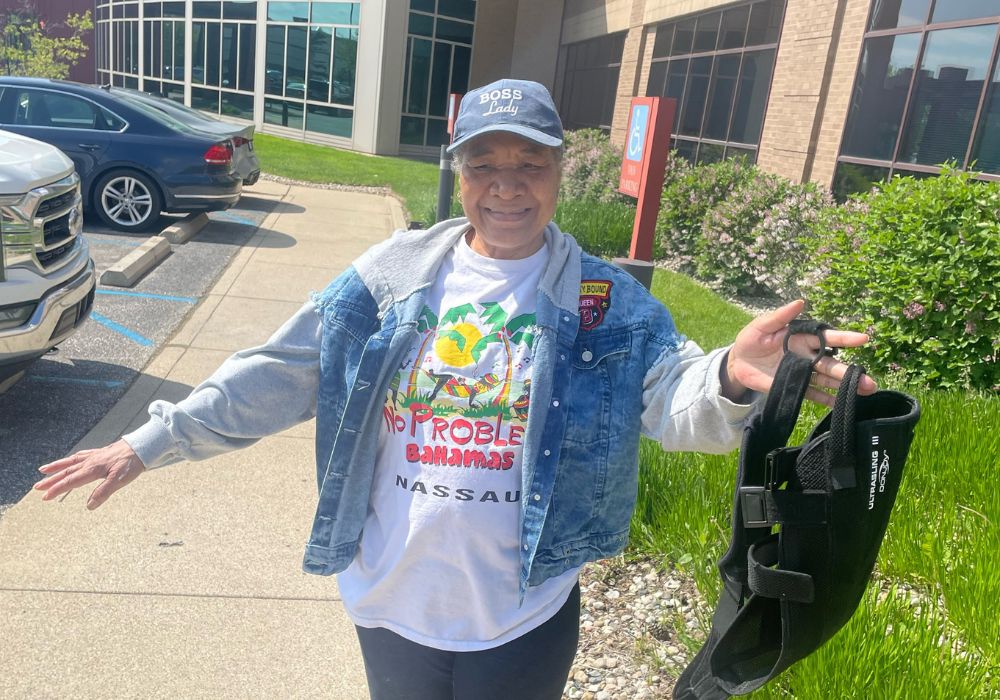THIS POST IS PART OF THE ULTIMATE GUIDE TO TOTAL HIP REPLACEMENT
Although these periprosthetic fractures are rare, breaking your femur bone around the implant after a total hip replacement almost always requires surgery. A fractured hip after total joint replacement is also called periprosthetic hip fracture.
Anatomy
The hip is your body’s largest weight-bearing joint. This joint is also called a ball-and-socket joint. The ball is the upper end of the thighbone (femur), which fits into the socket (or acetabulum) at your pelvis. Several muscles cross the hip joint and a strong capsule envelops the hip joint itself.
Muscles are connected to bones that make up the hip joint by tendons, which are made from strong fibrous tissue, enabling motion of the joint. Most hip fractures after total joint replacement occur in the femur bone, which surrounds the stem of the metal component placed inside the femur.
Cause
Hip fractures occur due to a fall or direct impact to the side of the hip. Medical conditions such as osteoporosis (softening of the bone with age), or rarely cancer, can weaken the bone and make the femur more vulnerable to breaking.
Note: Very rarely does the actual hip replacement implant break, but it is the bone around it that fractures. The metal implants are stronger than bone. This leads to an unstable implant that is no longer fixed to the bone, necessitating revision surgery.
A loosened femoral stem can also put you at a higher risk for fracturing your hip after total joint surgery. This occurs due to everyday activity and loosens overtime.
Symptoms
- Pain around the hip or thigh
- Inability to bear weight
- Injured leg appears shorter and rotated
- Swelling and bruising around the hip
Physician examination
To determine whether you have periprosthetic femur fracture, your physician will ask you for a complete medical history and conduct a physical examination. An X-ray typically can confirm the diagnosis, but on occasion, an MRI or CT scan is necessary.
Make an appointment with an OrthoIndy hip specialist
Treatment
Most periprosthetic femur fractures after total joint replacements are treated with surgery. A surgeon will decide how to best fix the fracture based on the area of the femur that is broken and the status of the implant. If the implant is loose, it will be removed, the femur will be put back together and then a new implant will be placed that is solidly fixed to the femur, giving the patient a stable construct again. This is the most common scenario. Occasionally, the fracture is slight and stable and can be treated without surgery.
Recovery
Patients are always encouraged to get out of bed on the day following surgery with the assistance of a physical therapist. The physical therapist will work with the patient to help regain strength and the ability to walk.
The hospital stay may be two to three days and then the patient is transferred to a rehabilitation hospital or home to continue exercises on their own. The stay at the rehabilitation hospital is varied and is determined by the physician who is caring for the patient at the rehabilitation hospital.
Healing of these types of injuries takes time. Bones typically heal in 6 to 12 weeks. During this time, patients have to be careful not to re-injure themselves. Often a walker is needed for six to eight weeks after these serious types of injuries. The level of function that the patient is able to achieve after these types of fractures is dependent on how active the patient was before the fracture occurred.
Learn more about treatment options for hip pain at OrthoIndy.
Schedule an appointment
Your well-being is important to us. Click the button below or call us to schedule an appointment with one of our orthopedic specialists. If your injury or condition is recent, you can walk right into one of our OrthoIndy Urgent Care locations for immediate care. For rehabilitation and physical therapy, no referral is needed to see one of our physical therapists.






